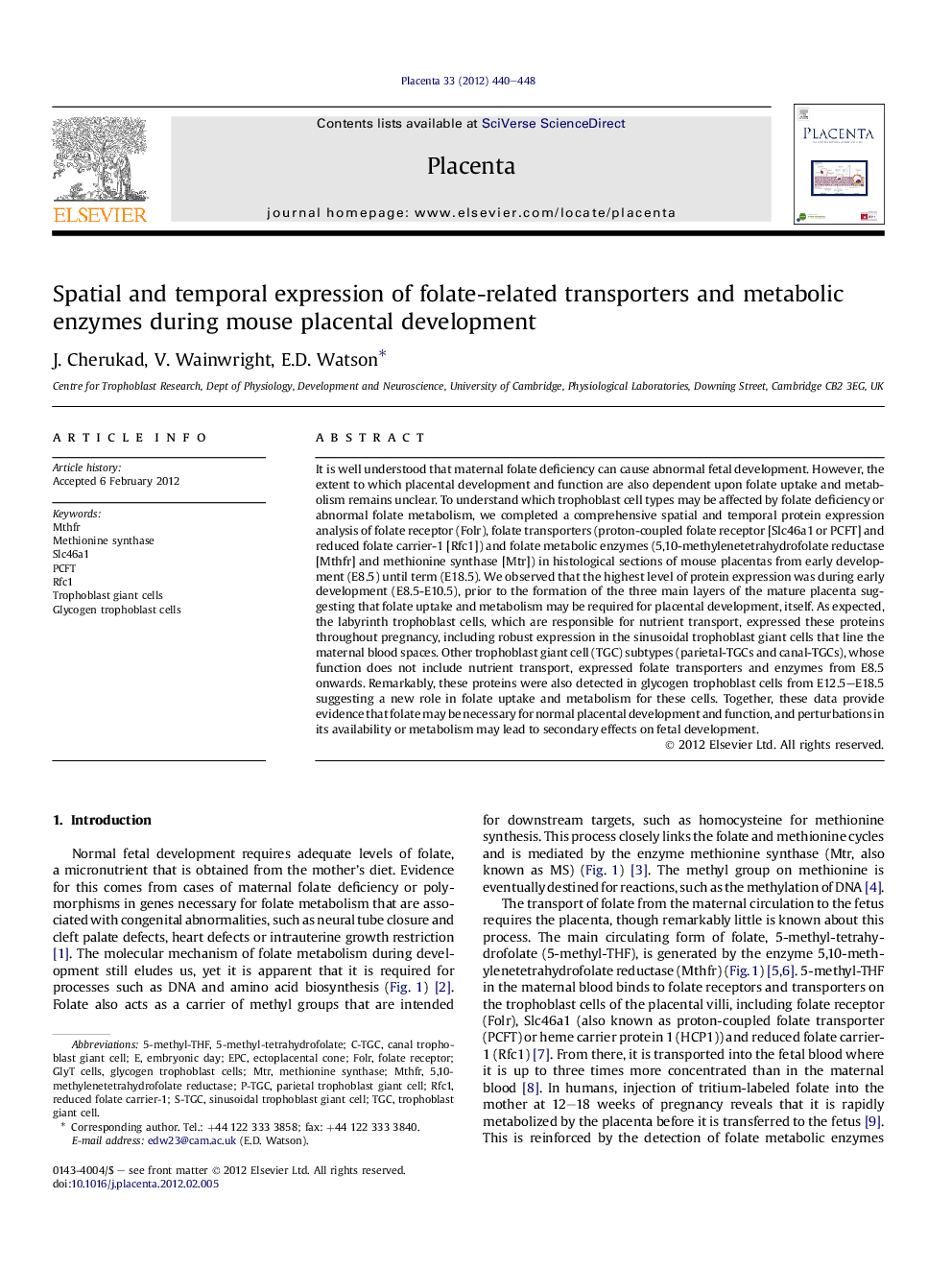| کد مقاله | کد نشریه | سال انتشار | مقاله انگلیسی | نسخه تمام متن |
|---|---|---|---|---|
| 2789267 | 1154487 | 2012 | 9 صفحه PDF | دانلود رایگان |

It is well understood that maternal folate deficiency can cause abnormal fetal development. However, the extent to which placental development and function are also dependent upon folate uptake and metabolism remains unclear. To understand which trophoblast cell types may be affected by folate deficiency or abnormal folate metabolism, we completed a comprehensive spatial and temporal protein expression analysis of folate receptor (Folr), folate transporters (proton-coupled folate receptor [Slc46a1 or PCFT] and reduced folate carrier-1 [Rfc1]) and folate metabolic enzymes (5,10-methylenetetrahydrofolate reductase [Mthfr] and methionine synthase [Mtr]) in histological sections of mouse placentas from early development (E8.5) until term (E18.5). We observed that the highest level of protein expression was during early development (E8.5-E10.5), prior to the formation of the three main layers of the mature placenta suggesting that folate uptake and metabolism may be required for placental development, itself. As expected, the labyrinth trophoblast cells, which are responsible for nutrient transport, expressed these proteins throughout pregnancy, including robust expression in the sinusoidal trophoblast giant cells that line the maternal blood spaces. Other trophoblast giant cell (TGC) subtypes (parietal-TGCs and canal-TGCs), whose function does not include nutrient transport, expressed folate transporters and enzymes from E8.5 onwards. Remarkably, these proteins were also detected in glycogen trophoblast cells from E12.5–E18.5 suggesting a new role in folate uptake and metabolism for these cells. Together, these data provide evidence that folate may be necessary for normal placental development and function, and perturbations in its availability or metabolism may lead to secondary effects on fetal development.
Journal: Placenta - Volume 33, Issue 5, May 2012, Pages 440–448